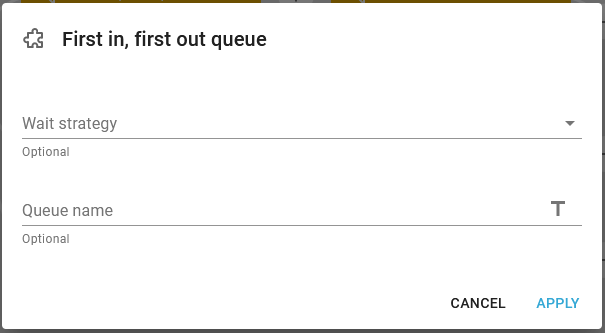With this advanced, utilities workflow component you can ensure, that input files are processed in the sequence in which they have arrived in InterFormNG2, where they normally a processed in parallel and might e.g. print out in a different order than expected.
Limitation
The First in first out queues are cleared during a restart of InterFormNG2, so if you restart the InterFormNG2 processor while one or more input files are waiting to be processed, then these files will not be processed. If a high reliability FIFO queue system is needed, then an external queue system like a Message Queue or other FIFO based input/output is recommended.
The first in first out component has these parameters:

Wait strategy
This can have these values:
WAIT: This is the default strategy (if no strategy has been selected), where the webservice (or other input) won't return with anything until the workflow is processed. The benefit is that the job will reply back if something went wrong, the cost is the holding connection, which might block the ERP or cause a timeout.
RETURN: The webservice (or other input) doesn't wait for the queue to process and returns after the payload have been placed. The benefit is that the connection no longer waits until the process is completed. The cost is that the caller have to either look in the job log or call for a log info xml status to see if the job went well.
Queue name
The default queue (blank) is global for all the workflows (that belongs to the tenant). For large companies there might be a need for multiple FIFO queues, e.g. if there are multiple label printers and/or departments. In order to have multiple queues, they need to be named. You can freely select a name of your choice. Each named queue is also global for all the workflows (that belongs to the tenant).
Example of use:
This is an example of how you can use the First in first out component:
